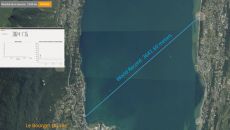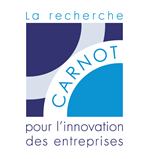<p> </p> <h3> BeSpoon and Carnot institute CEA LETI establish World Record Distance Measurement<br /> on Single Chip</h3> <p> </p> <p> BeSpoon, a fabless semiconductor company, and CEA-Leti have demonstrated an IR-UWB integrated circuit able to measure distances within a few centimeters’ accuracy, and have established a world-record operating range at 880m (standard regulation) and 3,641m (emergency situations).<br /> Impulse radio ultra-wideband (IR-UWB) is recognized as an ideal technology for indoor applications, both in terms of accuracy and robustness. It measures distances within a few centimeters’ precision and is not affected by walls or people passing by.</p> <p> The BeSpoon and Leti collaboration overcame two challenges sometimes associated with this technology: the difficulty integrating it on a single chip and its perceived limited operating range.<br /> The chip jointly designed by BeSpoon and Leti features a full-blown IR-UWB CMOS-integrated transceiver that is able to perform accurate distance measurements. The standalone chip (RF front-end and digital base band) is designed for a straightforward integration within smartphones or set-top boxes.</p> <p> Furthermore, BeSpoon has demonstrated the capability to comply with the strict regulation of IR-UWB, and yet operate up to 880m in line of sight. A world record distance measurement has been established at 3,641 meters, in compliance with the regulation for emergency situations.<br /><strong><em><a href="http://www.leti.fr/en" target="_blank">For more information</a></em></strong></p> <h3> Carnot institute Energies du futur and Microphyt collaborate on microalgae</h3> <p> Microphyt company outsources part of its R&D in the framework of a collaboration agreement over four years to implement the BOLERO program.</p> <p> It focuses on the development processes of mass production and the development of relevant molecules synthesized by green microalgae, such as Chlamydomonas. This species has been particularly studied in 7000 scientific publications and 130 patents.</p> <p> BOLERO program aims to identify the most promising molecules and optimize their synthesis by the selection of improved strains to increase production yields. It also plans to improve this technology by transfering solar technology knowledge of the CEA. Several CEA teams are involved in this partnership : CEA-Liten from Carnot institute Energies du futur, is in charge of technological research on new energy technologies, and CEA-iBEB which explores the potential of microalgae under its platform Heliobiotec located at Cadarache.<br /><strong><em><a href="http://www.energiesdufutur.eu/" target="_blank">For more information</a></em></strong></p>
Location


